Menu
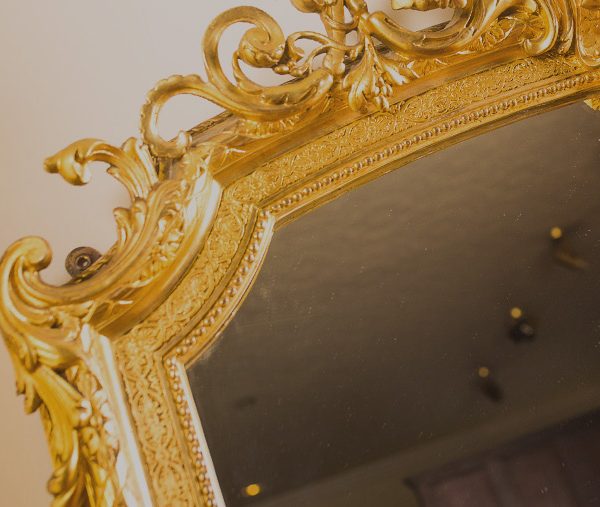
People have been using mirrors in some form for around 8000 years. Some of the earliest mirrors were made from obsidian, or volcanic glass, and examples of these have been discovered by archaeologists in what is now modern-day Turkey. Metal mirrors were used by the inhabitants of ancient Egypt, Mesopotamia and China, while the first mirrors to use metal-backed glass were produced in Lebanon in the 1st century. Despite their fragile nature, many antique mirrors from the 17th century onward are still going strong today. This may be due to the fact that mirrors were valued possessions and were, therefore, often well cared for and passed down as treasured heirlooms. At Nimbus Antiques, you’ll find a wide range of beautiful wooden and gold antique mirrors, including wall-mounted, cheval and toilet mirrors. This useful buyer’s guide will introduce some of the types of antique mirror most commonly found in the UK today. It’ll help you to identify the age of an antique mirror based on its features, and will explain what you should look out for when choosing one.
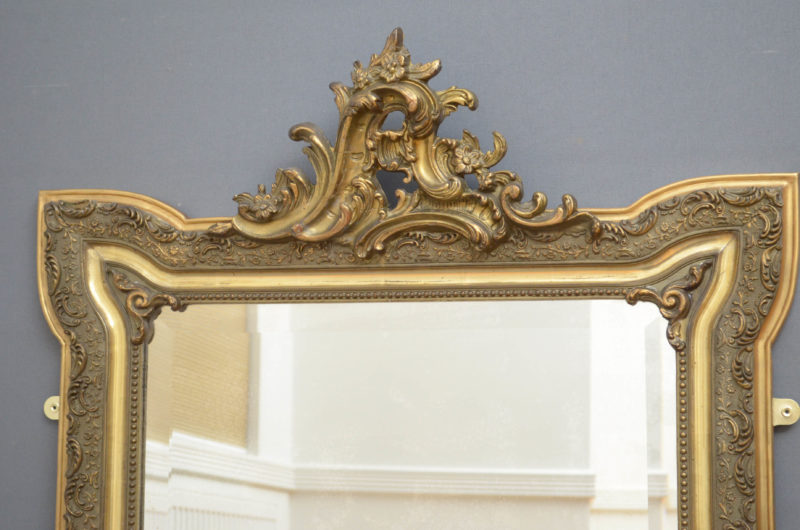
Throughout history, mirrors have been used for symbolic purposes as well as practical ones. In the areas inhabited by the Silk Road, handheld mirrors were used in rituals and funerary rites, as well as some forms of entertainment. The earliest mirrors were handheld and it is not surprising that portable mirrors have remained popular through the decades, from the first glass mirrors with handles used by the Romans to the decorative compact mirrors carried by Victorian ladies.
It is thought that dressing tables were first used by the ancient Egyptians, however, they became a sought-after piece of furniture for wealthy Europeans during the late 1600s, when carpenters in Italy and France began producing designs that often incorporated an internal mirror. A great example is Jean-François Oeben’s mechanical table, which was made for Madame de Pompadour. Separate free-standing mirrors, designed to fit atop a dressing table, became popular in the 17th century. Known as toilet mirrors, these were often made from dark wood and some included a small drawer for storing jewellery or toiletries.
Named after the French word for horse, due to the fact they stand on four legs, cheval mirrors are essentially a larger version of the toilet mirror. Often full-length, these ornate yet functional mirrors were first produced in Paris and gained popularity during the 19th century. Cheval mirrors from the Victorian era are often constructed from mahogany or walnut, and usually feature a relatively thick wooden frame with carved detail. Art Deco cheval mirrors, on the other hand, are likely to feature a thinner frame – or no frame at all – as well as a base that consists of one solid block of wood.
Through the 1700s, large wall mirrors were all the rage. British factories at this time were unable to make large mirrored plates, so when a tax on glass prevented the import of wall mirrors from France, British manufacturers instead began to place smaller pieces of glass together in a single frame, giving the appearance of a much larger mirror. At the start of the 19th century, smaller wall mirrors gained popularity again, with convex mirrors becoming a fixture in many upper-class dining rooms where they were used by butlers to check how a meal was progressing without disturbing the diners. Nowadays it is still relatively easy to find and purchase antique wall mirrors from the Victorian and Georgian periods, as well as those produced in the Art Nouveau and Art Deco styles.
It is often possible to get a good idea of the age of an antique mirror based on its stylistic features. Below we share some of the key design features of mirrors produced from the 1700s onward.

Also described as ‘late Baroque’, the Rococo style gained popularity in the 1730s. Rococo mirrors have heavy frames, sometimes made from gilded plaster. The highly-ornate designs of this period often incorporate natural forms, such as shells, floral or leaf motifs.
Mirrors from the late-Georgian or Regency era (1811-1820) are simpler in design than their Victorian counterparts. These antique gilt mirrors often feature square or rectangular columned frames. Like other pieces of furniture produced during this era, Regency mirrors are often decorated with neoclassical motifs such as scrolls or wreaths.
Produced during the 18th century, these antique mirrors take their name from the famed cabinet maker Thomas Chippendale (1718–1779). Chippendale-style mirrors usually feature a thin frame made from dark wood, such as mahogany or cherry, and are adorned with delicate carvings.
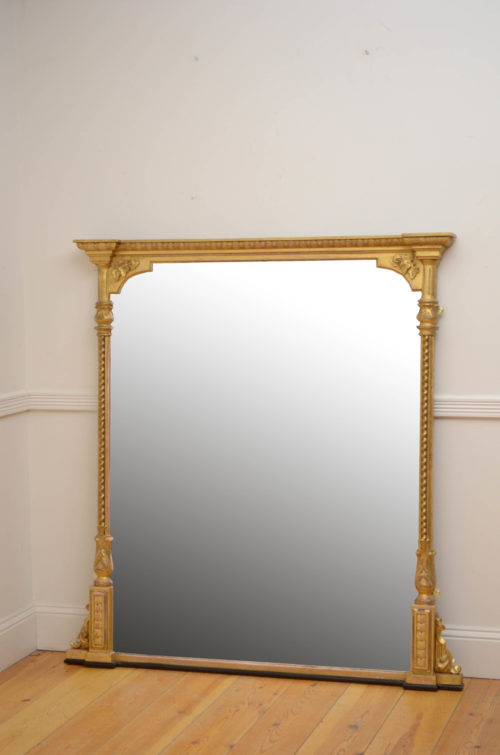
When it comes to large antique mirrors, a significant number were produced during the Victorian era (1837-1901). Mirrors dating from this period are usually heavily carved with bold details, sometimes in styles borrowed from earlier years. Victorian mirrors were often made from woods such as mahogany or walnut and many were gilded.
Inspired by the natural world, mirrors in the Art Nouveau style (1890-1910) feature soft flowing lines along with graceful motifs depicting flora and fauna.
Decadent and glamorous, mirrors in the Art Deco style of the 1920s are often composed of angular and symmetrical shapes with straight lines and minimal detail.
It’s hard to give an idea of how much an antique mirror should cost, as each mirror will be individually priced based on factors including its age, condition and the materials used in its manufacture. At Nimbus Antiques, you’ll find antique mirrors priced between £500-£5000.
If you’re about to spend a large amount of money on an antique mirror, it’s important to know exactly what you are buying. The below tips will help you to gain more of an idea when it comes to estimating a mirror’s age and attempting to reveal its provenance.
Glass that has been replaced doesn’t tend to have a huge effect on an antique mirror’s value. A mirror that still has its original glass is, however, often more desirable. If a mirror still has its original glass this may help to give away its age – older glass is usually much thinner than modern glass and normally has a yellow or grey tone, rather than being colourless. Glass that has been around for a long time also has more character, and some small imperfections, such as light foxing, may even add to its appeal.
Looking at the back of an antique mirror could provide more clues as to its age and origin. You may find an engraved or stamped name or logo, which might help you to identify where it was made and by whom. Older mirrors tend to feature wooden rather than paper backing, so this is also worth checking.
A genuine antique mirror will always have suffered some wear and tear. Check the wooden frame carefully for areas of fading or darkening, as well as any stains or woodworm. The mirror glass itself will also have signs of ageing if it is original – look out for any cloudy spots or foxing, as well as any scratches or chips on the surface.
If you’ve seen and fallen in love with an antique mirror, it might be difficult not to buy it there and then. When it comes to antiques, however, it pays to do your research. You may want to take a photograph of your mirror and then spend some time researching its design features and looking for similar models online so you can be more sure that it isn’t just a modern-day replica.
When you buy antiques from a well-established, knowledgeable dealer, you know that you can trust in their expertise. Established in 1979, Nimbus Antiques have over 30 years of experience and are registered members of LAPADA, the Association of Art & Antiques Dealers. For help on this topic read our article on how to find a reputable antique dealer.
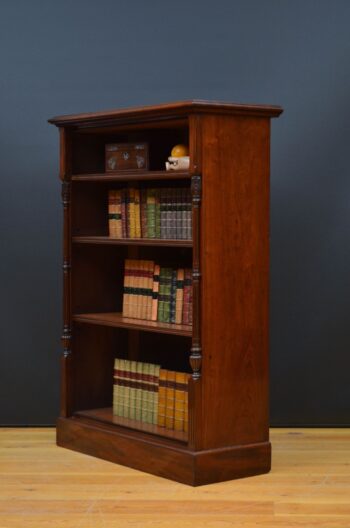 Victorian mahogany open bookcase
$2,185.45
Victorian mahogany open bookcase
$2,185.45
 Victorian Walnut Open Bookcase
$2,140.05
Victorian Walnut Open Bookcase
$2,140.05
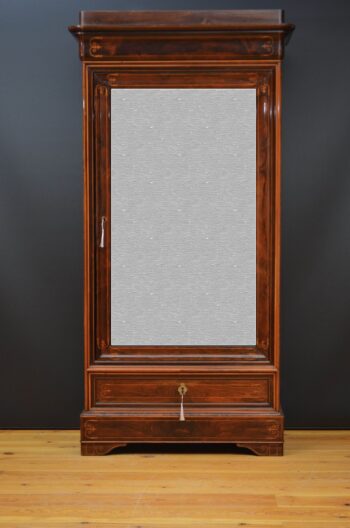 Antique French Rosewood Wardrobe or Bookcase
$3,242.50
Antique French Rosewood Wardrobe or Bookcase
$3,242.50
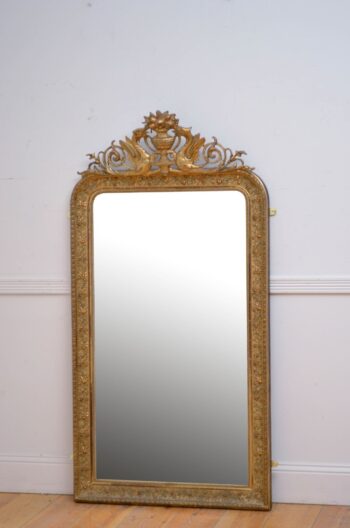 French 19th Century Gilded Pier Mirror H161cm
$3,372.20
French 19th Century Gilded Pier Mirror H161cm
$3,372.20
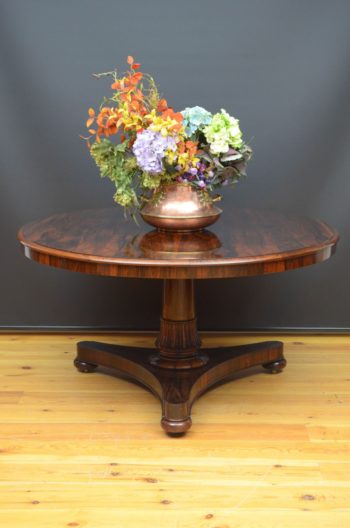 Fine William IV Centre Table Dining Table
$4,928.60
Fine William IV Centre Table Dining Table
$4,928.60
| Cookie | Duration | Description |
|---|---|---|
| cookielawinfo-checbox-analytics | 11 months | This cookie is set by GDPR Cookie Consent plugin. The cookie is used to store the user consent for the cookies in the category "Analytics". |
| cookielawinfo-checbox-functional | 11 months | The cookie is set by GDPR cookie consent to record the user consent for the cookies in the category "Functional". |
| cookielawinfo-checbox-others | 11 months | This cookie is set by GDPR Cookie Consent plugin. The cookie is used to store the user consent for the cookies in the category "Other. |
| cookielawinfo-checkbox-necessary | 11 months | This cookie is set by GDPR Cookie Consent plugin. The cookies is used to store the user consent for the cookies in the category "Necessary". |
| cookielawinfo-checkbox-performance | 11 months | This cookie is set by GDPR Cookie Consent plugin. The cookie is used to store the user consent for the cookies in the category "Performance". |
| viewed_cookie_policy | 11 months | The cookie is set by the GDPR Cookie Consent plugin and is used to store whether or not user has consented to the use of cookies. It does not store any personal data. |